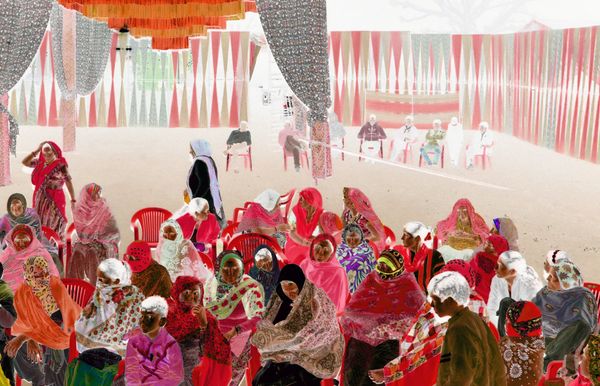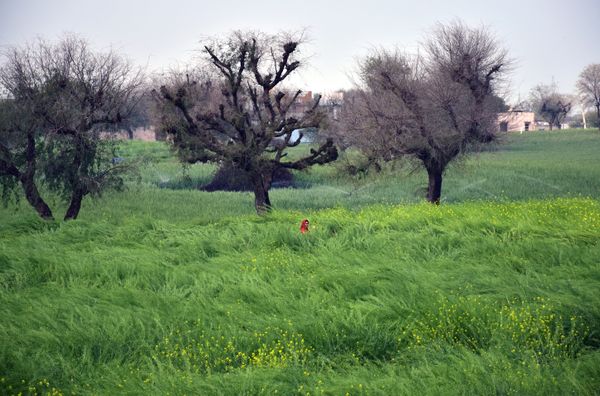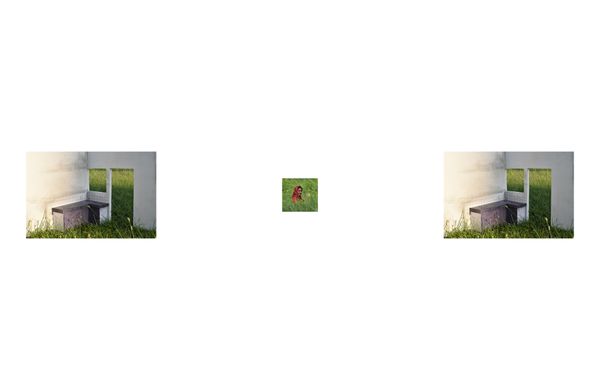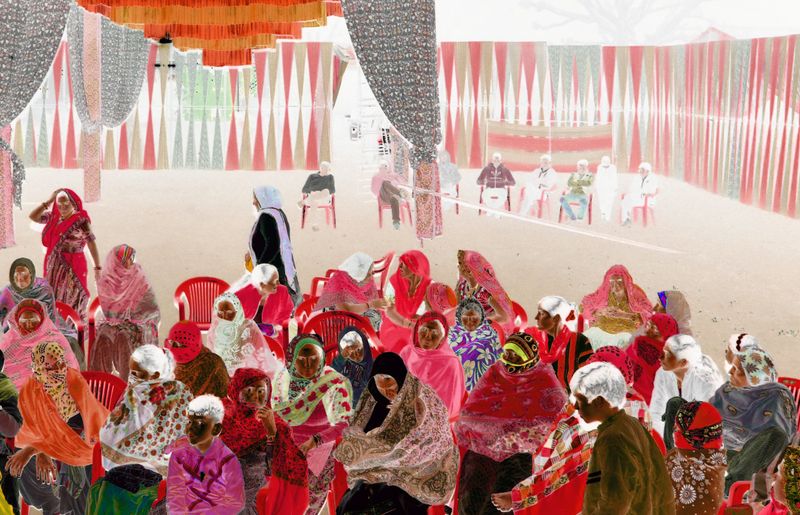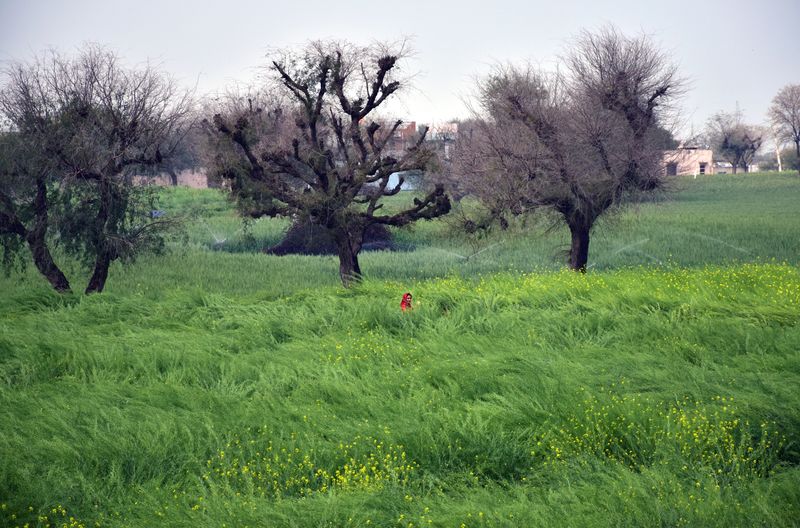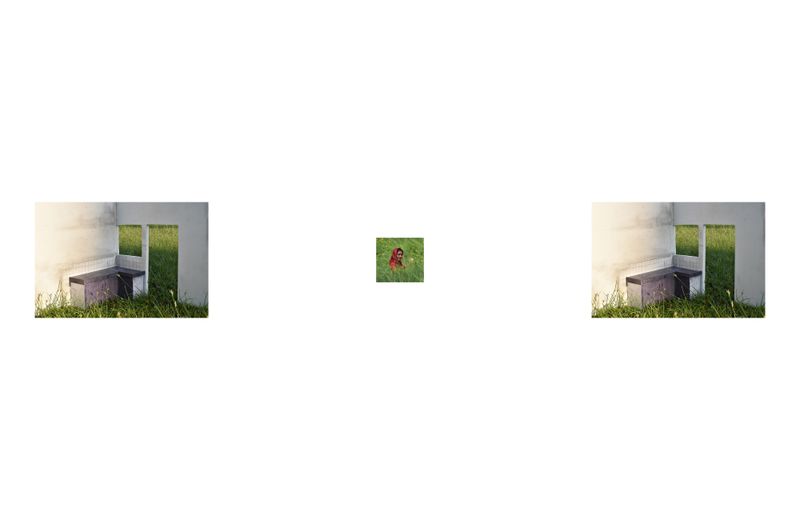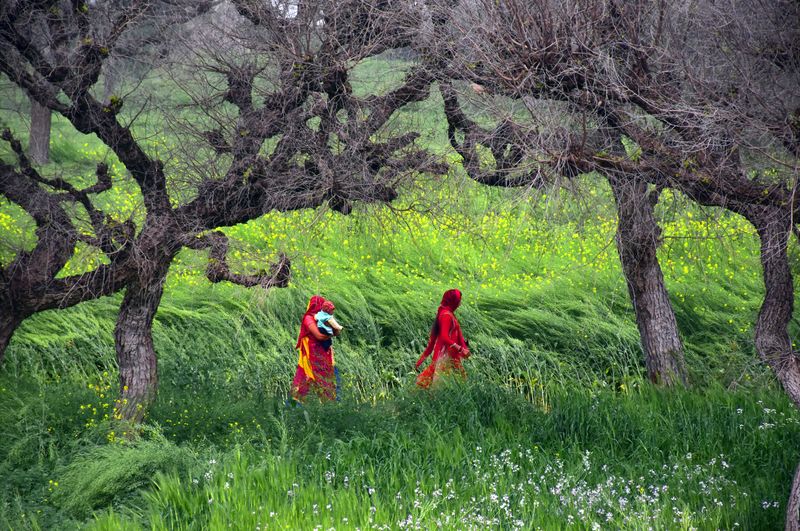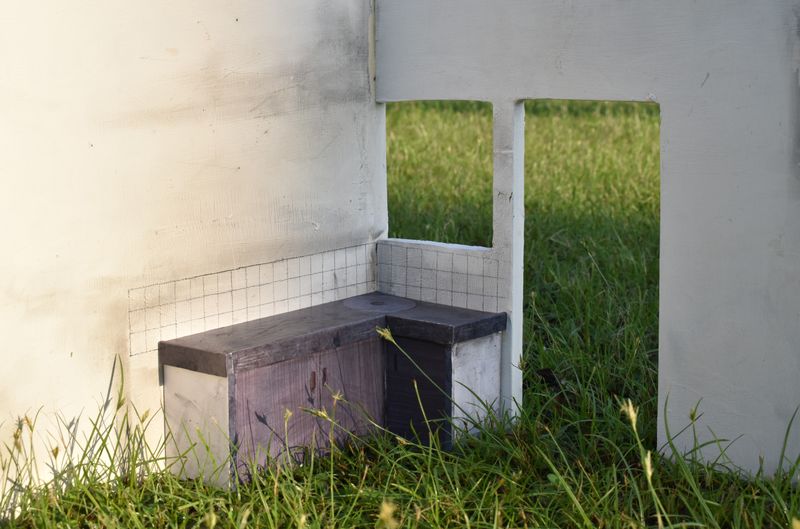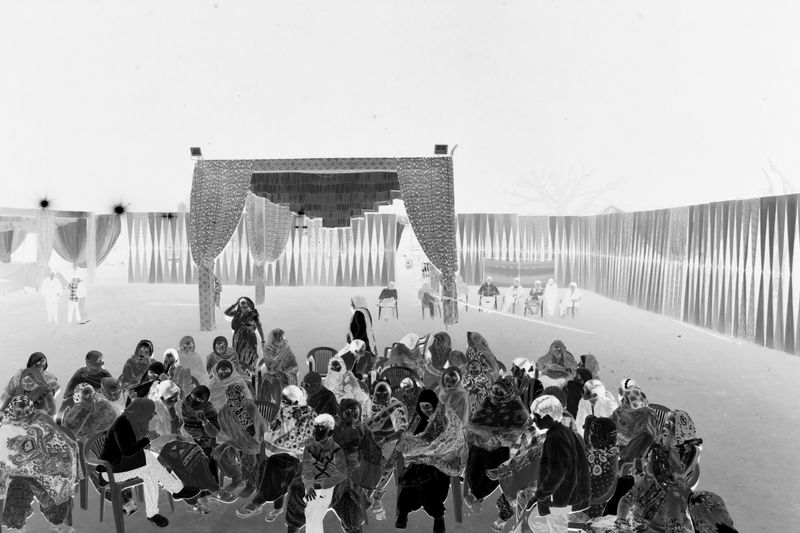Denial is a River
-
Dates2025 - 2025
-
Author
- Topics Contemporary Issues, Daily Life, Fine Art, Social Issues
- Location Rajasthan, India
Feminist perspectives on such traditions vary, but I believe that our understanding of gender, agency, and choice is shaped by the structures we inhabit.
In Rajasthan, India, the practice of veiling remains a regular part of life. Yet, for me, witnessing it firsthand has been a rare experience. Feminist perspectives on such traditions vary, but I believe that our understanding of gender, agency, and choice is shaped by the structures we inhabit. Within these structures, everything remains limited—until someone disrupts or redefines them.
One evening, while standing on a terrace, I noticed a vast field of long grass stretching into the distance. Suddenly, a flash of red moved through the landscape and came to a halt. It was a woman, adjusting her ghunghat (veil). Then, in an unexpected shift, she pulled it back and began taking selfies. Meanwhile, the women around me were engaged in a conversation about the dishes she had cooked that morning. Their world continued as if nothing had changed.
I wondered—was she rebelling, or simply existing within the contradictions of tradition and modernity? Were these women comfortable in their roles, or were they performing them out of habit? Perhaps happiness is not about breaking away from structure but finding a way to live within it.
I do not argue that the veil is inherently good or bad. What matters is whether a woman chooses it for herself within the framework she inhabits. Watching these women, I was struck by the quiet strength they carried. I have often felt that women—especially mothers—are among the most powerful people in the world. I understood this on a deeper level when I rented a house and found myself caring for a home, from cleaning to cooking. These everyday acts, so often overlooked, hold immense resilience.
In this series, I juxtapose the landscape with images from my past project—photographs of a kitchen model. By placing them together, I create a layered narrative, blending domesticity with the open expanse of the outside world. The contrast mirrors the duality I observed: between tradition and personal agency, between confinement and quiet defiance.
